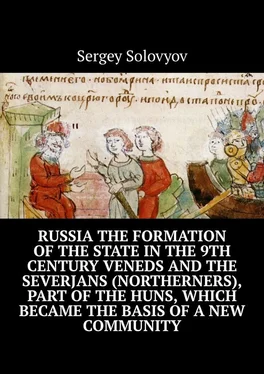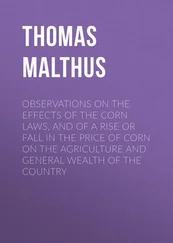Protoberezhnovskie sites are common in the Lower Volga region, where, according to the researcher, the Novokumak ethnic component, which came from the east, is layered on the Late Catacomb population. Later, the tribes of the Pokrovskaya Srubnaya culture moved to the left bank of the Seversky Donets, where they were completely assimilated by the bearers of the Baba culture. As a result of the assimilation of the Pokrovsky population by the Babinsk tribes Berezhno-Mayovskaya Srubnaya culture is being formed. The Pokrovskaya Srubnaya culture (XVIII – XV centuries BC) is widespread in the steppe and forest-steppe zone from the Seversky Donets to the Volga. Some monuments are presented in the Urals. An eponymous monument is the Pokrovsky burial ground in the Saratov Volga region, which was investigated by P.S. Rykov in the 1920s near the town of Pokrovsk (now – Engels). Highlighted in the early 1990s by N.M. Malov and O.V. Kuzmina as the Pokrovskaya culture. It was formed on the basis of the Don-Volga Abashev culture under the direct influence of the Sintashta and Potapov-type monuments of the Middle Volga region. Monuments are represented by settlements, burial grounds, treasures, mines, workshops and accidental finds. The settlements were located in the immediate vicinity of rivers on small heights. The most studied settlements are Lake Usovo, Mosolovka, Kapitanovo, Yanokhino, Rubtsy and Prokazino.
Dwellings of that time, above-ground, dugouts and semi-dugouts of a frame-and-pillar structure with a gable or hipped roof. The walls are made of turf, logs, rarely of stone. In large buildings, the residential part is most often separated from the utility part. Inside the dwellings there were one or more hearths, pits, and sometimes a well. Funeral monuments are represented by burial mounds and ground burials. They are mainly located on terraces or hills along river banks, less often on watersheds. The burial mounds of the Pokrovskaya culture include a small number of embankments – from 2 to 15. Single burial mounds and huge necropolises are rare.
The mound was erected after the last burial. The number of burials in the mound varies from 1 to 100. The deceased were buried in sub-rectangular pits, sometimes in log cabins in a crumpled position on their left side, in an adoration position, with their head to the north. Vessels serve as burial implements, less often weapons and jewelry. The graves also contain animal bones – the remains of meat food. The most studied burial grounds are Pokrovsky, Staroyabalaklinsky and Novopavlovsky. The ceramic complex of the culture is represented mainly by sharp-ribbed pots with geometric patterns. Tools and weapons made of stone are represented by a variety of axes and maces, arrowheads, scrapers, hammers, knives, anvils, miners and abrasives. Ornaments are also known – earthenware beads, grooved temple pendants and bracelets. Bone products are widespread: cheekpieces, awls, polishes, punctures, needles, knitting needles, arrowheads. Tools made of metal are represented by axes, sickles, testers and chisels, punctures, cutting knives with a wide rhombic crosshair and daggers with a cast-in handle. Decorations made of bronze, antimony and gold are also widespread: rings, temporal lobular rings, plaques, spiral-shaped bracelets and open bracelets with a spiral ending. In general, the spiral pattern was widespread.
The basis of the economy of the carriers of the Pokrovsk culture was stall and distant pasture cattle breeding. Ethnically, the population of the Pokrovskaya Srubnaya culture represents an Indo-Iranian ethnic group and had certain signs of an Indo-Aryan ethnos at an early stage of its development.
The Berezhnovsko-Mayevskaya Srubnaya culture (XVII – XII centuries BC) is widespread in the steppe and forest-steppe zone from Ingulets to the Volga. Eponymous monuments are the Berezhnovsky burial mound in the Volga region and the Mayevsky burial ground near the city of Dnepropetrovsk. In the 70s of the XX century, N.K. Kachalova identified the Berezhno type of monuments, and I.F.Kovaleva – the Mayev type. The general features of the funeral rite made it possible for V.V. Otroshchenko to combine both types into a separate Berezhno-Mayev culture as part of the Timber Cultural-historical community. Yu. M. Brovender distinguishes the Stepanov type of monuments in her environment. It was formed on the basis of Babinskaya and Pokrovskaya Srubnaya cultures. Monuments are represented by settlements, burial mounds and earthen burial grounds, mines, workshops, treasures and random finds. The settlements were located in the immediate vicinity of rivers on small heights. Dwellings are represented by dugouts, semi-dugouts and ground structures with stone walls. Fireplaces were used to heat the dwellings. Funeral monuments are represented by burial mounds and ground burials. Kurgan necropolises are located mainly on terraces or hills along river banks, less often on watersheds. They include a small number of fillings, usually with several fillings. The construction of long mounds was practiced. The deceased were buried mainly in sub-rectangular pits, sometimes in stone boxes, in log cabins in a crouched position on their left side, with their heads to the east. Cremation is also known. Soil burial grounds of the Berezhnovsko-Mayevskaya culture are located mainly on the edges of the indigenous banks, the first terraces above the floodplain, and on small natural elevations in the floodplain – in the immediate vicinity of rivers and settlements synchronous to them. Burials are represented by inhumations and cremations. Burials according to the inhumation rite were performed in sub-rectangular pits and stone boxes. Burials in log cabins on the territory of ground burial grounds were not recorded. The deceased were located in a crumpled position on their left side, with their heads to the east. Cremations are represented by burials in urn vessels and in small ground pits. Vessels are used as burial implements; metal products are less common.
Ceramics is represented by jars, pot-shaped and sharp-ribbed vessels with geometric patterns in the form of horizontal and inclined lines, flutes, zigzags, Christmas trees and other geometric shapes. Sometimes on vessels, mainly in their upper part, there is a cord ornament and various signs in the form of crosses, solar signs, rectangles, schematic anthropomorphic and zoomorphic images. At a later time, the swastika and meander pattern began to be depicted. A number of researchers see them as primitive pictographic writing. The content of these signs has not yet been deciphered. The burials also contain wooden cult utensils, sometimes with bronze fittings. Tools and weapons made of stone are represented by a variety of axes and maces, side-scrapers, hammers, knives, anvils, miners and abrasives. Bone products are widespread: cheekpieces, awls, polishes, punctures, needles, knitting needles, arrowheads. Tools made of metal are represented by axes, sickles, whips and chisels, punctures, needles, cutting knives with a marked crosshair and daggers with a ring stop.
Metal jewelry is also widespread: rings, temporal lobed rings, wire pendants, spiral bracelets, and open bracelets with double volute. Volute, appears in the form of hairpins and images. The basis of the economy was stall and distant cattle breeding, which supplemented agriculture. Ethnically, the carriers of the Berezhno-Mayev culture represent the Iranian-speaking group of the Indo-European language family. Recently, there has been an active scientific debate regarding the upper chronological limit of the Timber Cultural-historical community. … S. I. Berestnev in his work “The Timber Culture of the Forest-Steppe Left Bank of Ukraine” extends its existence up to the 9th-8th centuries BC, that is, the Timber culture is replaced by the Cimmerian-Scythian culture.
Читать дальше












